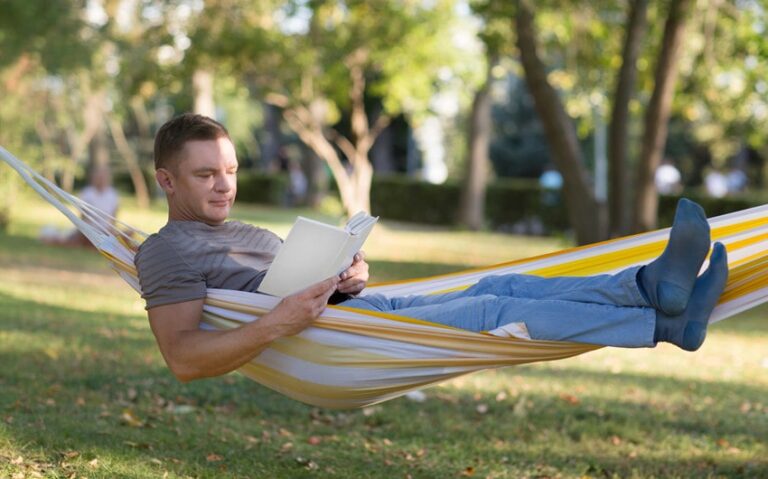Micro-Mindfulness: Tiny Habits That Bring You Back to the Present
We tend to think mindfulness requires hours of meditation, a perfect morning routine, or a peaceful mountain view. But the truth is, mindfulness doesn’t need ceremony or silence — it just needs attention.
And attention takes seconds.
Micro-mindfulness is about finding presence in ordinary life — in the in-between moments, the daily motions, the small pauses that often go unnoticed. It’s not about changing your life. It’s about noticing it.
You don’t have to stop everything to be mindful. You just have to start paying attention to what’s already happening.
What Micro-Mindfulness Means
Micro-mindfulness is the practice of weaving short, intentional moments of awareness into your day. It’s mindfulness made simple and realistic — something that fits into real life, not just ideal conditions.
It’s the fifteen seconds it takes to breathe deeply before you open your email. The awareness of your feet touching the ground when you step outside. The moment you pause to taste your morning coffee instead of gulping it down.
Each small act reminds you that you’re here — not lost in thought, not pulled by the past or the future, but alive in this exact moment.
These tiny moments don’t just make you calmer. They make your life richer, because you’re finally present enough to experience it.
Why the Small Moments Matter
We often underestimate small things — small habits, small gestures, small steps — but they’re what build our days.
Most of life isn’t made up of milestones or big events. It’s made up of seconds — tiny, repeating moments that add up to meaning.
When you practice mindfulness in small ways, you teach your brain that peace is always available, even in the middle of ordinary life. You learn to carry calm with you instead of chasing it.
The Myth of a “Perfect” Practice
Many people avoid mindfulness because they think they’re doing it wrong. Their mind wanders, they lose focus, they forget to breathe intentionally — and they assume they’ve failed.
But mindfulness isn’t about perfection. It’s about noticing when you’ve drifted and gently returning to awareness. That returning is the practice.
Even ten seconds of noticing your breath counts. Even realizing you’ve been distracted counts.
The goal isn’t to clear your mind — it’s to meet it.
The Power of Pausing
One of the simplest ways to practice micro-mindfulness is to pause intentionally throughout the day.
Pausing doesn’t mean stopping everything. It means coming back to awareness in the middle of whatever you’re doing.
Before you speak. Before you scroll. Before you rush to the next task.
Take a breath. Feel your body in space. Ask yourself, What’s happening right now?
That one conscious breath can change the tone of your entire day. It can calm your body, steady your thoughts, and help you respond instead of react.
Fifteen seconds of presence can reset your energy more than an hour of distraction ever could.
Everyday Moments to Practice Micro-Mindfulness
Mindfulness doesn’t live in meditation cushions — it lives in moments.
Here are simple ways to bring it into your day without adding anything extra:
1. When you wake up
Before reaching for your phone, take one deep breath. Notice the light in the room. Feel the air against your skin. Start the day by arriving in it.
2. When you drink your coffee or tea
Slow down. Feel the warmth in your hands. Inhale the scent. Take a sip and really taste it. Let the moment hold you before you move on.
3. When you walk
Notice the ground beneath you. The sound of your steps. The air moving across your face. Let your walk be an act of awareness, not just transportation.
4. When you eat
Put your fork down between bites. Chew slowly. Notice flavor, texture, and gratitude. Food becomes nourishment when you actually experience it.
5. When you wash your hands
Feel the water. Notice the temperature. Watch the way it moves. Something as ordinary as this can bring you back to the present effortlessly.
6. When you wait
At red lights, in lines, in waiting rooms — instead of reaching for your phone, breathe. Look around. Notice life continuing around you.
Each small pause is a return — not to stillness alone, but to yourself.
Reclaiming Your Attention
Our attention is constantly under siege — pulled by notifications, noise, and endless streams of information. Mindfulness is how we reclaim it.
Attention is energy. Where you put it shapes how you experience your day. When your attention is scattered, life feels chaotic. When it’s anchored, life feels peaceful — even if nothing outside of you changes.
Micro-mindfulness helps train your mind to stay where your body is. It teaches you to hold attention gently instead of letting it scatter.
Every time you choose awareness over autopilot, you strengthen that muscle.
Presence in the Body
The body is always in the present moment. It doesn’t live in yesterday or tomorrow — only the mind does.
When you feel overwhelmed, come back to your body. Feel your feet, your breath, your heartbeat.
Touch is grounding because it connects you to reality. When you’re anchored in the body, the mind begins to follow.
You don’t need to think your way back into calm — you can feel your way back.
Breathing as a Bridge
Your breath is the simplest and most powerful tool for mindfulness. It’s the bridge between the mind and the body, between doing and being.
When life feels rushed, chaotic, or heavy, stop for one breath.
Inhale slowly through your nose.
Pause.
Exhale through your mouth.
You just changed your state.
The breath is always available — no matter where you are, no matter what’s happening. Every conscious breath is a tiny act of peace.
The Beauty of Noticing
The more you practice mindfulness, the more you start noticing things you used to miss.
The way morning light hits your kitchen counter. The sound of your own laughter. The smell of rain on pavement.
This isn’t about romanticizing life; it’s about participating in it. It’s about being awake for the moments that make it worth living.
When you notice, you connect — with your surroundings, your body, and your life.
The more you notice, the more grateful you become. And gratitude, more than anything, is what turns ordinary days into something beautiful.
Tiny Habits That Stay
Micro-mindfulness isn’t a temporary fix; it’s a gentle shift in how you live. The more you integrate small habits of awareness, the more natural they become.
Eventually, you won’t have to remind yourself to breathe before replying to a stressful message. You’ll do it instinctively. You won’t have to force stillness — it will start finding you.
The smallest habits are often the most powerful because they fit into life as it is. They don’t demand change; they create it quietly.
Mindfulness in Motion
You don’t have to sit still to be mindful. Awareness can move with you.
You can be mindful while cleaning the house, talking with a friend, or driving home. It’s not about what you’re doing — it’s about how you’re doing it.
When you bring attention to motion, motion becomes meditation.
Mindfulness isn’t an escape from life. It’s full participation in it.
Closing Thoughts
Micro-mindfulness is a reminder that peace doesn’t have to be found in silence or solitude. It can be found in seconds — in a single breath, a single sip, a single step.
You don’t need to change your life to live more mindfully. You just need to notice it as it happens.
Fifteen seconds here, ten seconds there — they add up. Each small pause brings you closer to the present, and the present is where joy always lives.
So take a moment now. Breathe. Look around. Feel this exact second of your life.
Because this is it — the moment you were always rushing toward.




